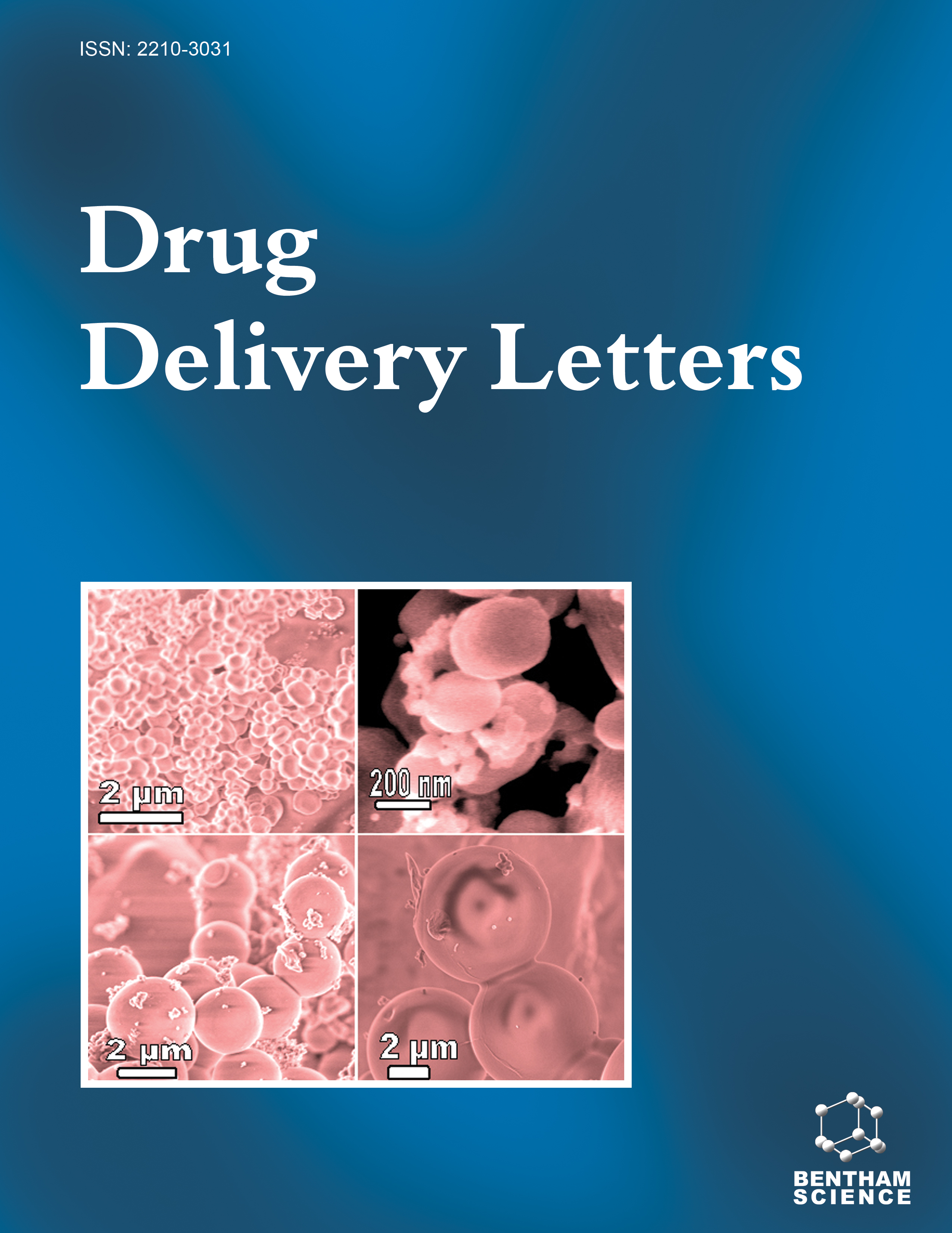- Home
- A-Z Publications
- Drug Delivery Letters
- Previous Issues
- Volume 10, Issue 2, 2020
Drug Delivery Letters - Volume 10, Issue 2, 2020
Volume 10, Issue 2, 2020
-
-
Nasal In-situ Gel: An Approach to Enhance Therapeutic Benefits of the Drug
More LessAuthors: Kapil Khatri, Shikha Jain and Satish ShilpiObjective: Drug delivery through the nasal route is emerging as a promising approach due to its capability to transport the drug to the systemic circulation and the central nervous system for therapeutic benefits. Methods: In-situ gelling formulations comprising polymeric substances are emerging as preferential nasal drug delivery systems. When exposed to biological stimuli, they have the ability to undergo a solgel conv Read More
-
-
-
Mucoadhesive Buccal Patch Role in Emesis: Tweaked up by the Pivotal Permeation Enhancer: Sodium Lauryl Sulphate
More LessBackground: It has been observed that several diseases either acute or chronic have a specific symptom that is emesis. Emesis leads to depletion and removal of several salts and biological essentials required in the body. Domperidone is a D2 receptor antagonist, which triggers the chemoreceptor trigger zone (CTZ) and hence used in the management of nausea and vomiting. Objective: The objective of this project Read More
-
-
-
Paroxetine Hydrochloride Push-pull Osmotic Pump Tablets: Designing an Innovative, Scalable Push-pull Osmotic Drug Delivery System Using QbD Approach
More LessBackground: Paroxetine hydrochloride hemihydrate (PHH) is a serotonin reuptake inhibitor useful for the treatment of diverse psychiatric problems. Existing marketed formulations with frequent administration lead to gastrointestinal (GI) reactions and abrupt fluctuations in plasma level with poor patient compliance. These prerequisites are sufficed by controlled release push-pull osmotic pump tablets (PPOP). Objective: Objective o Read More
-
-
-
Gastrointestinal Region Specific Insulin Permeation Enhancement by Aloe vera Gel
More LessAuthors: Elizca Pretorius, Clarissa Willers, Josias H. Hamman and Johan D. SteynBackground: The oral administration route is still the most preferred by patients for drug treatment, but is unfortunately not suitable for all drug compounds. For example, protein and peptide drugs (e.g. insulin) are typically administered via injection seeing as they are unstable in the gastrointestinal luminal environment and have poor membrane permeation properties. To overcome this problem, functional excipients Read More
-
-
-
Evaluation of Anticancer Activities of Gallic Acid and Tartaric Acid Vectorized on Iron Oxide Nanoparticles
More LessAuthors: Lina Saleh, Eman A. Ragab, Heba K. Abdelhakim, Sabrein H. Mohamed and Zainab ZakariaBackground: Cancer is one of the leading causes of death. New tactics targeting the survival pathways that provide effective drugs are being developed. Objective: Super paramagnetic nanoparticle serves as drug carrier for drug delivery system. Herein, Iron oxide-CMC-TA and Iron oxide-CMC-GA nanoparticles are synthesized for this target. Methods: Iron oxide (Fe2O3) nanoparticles are synthesized, bound to carboxymet Read More
-
-
-
Development of Mucoadhesive Buccal Drug Delivery System of Propranolol Hydrochloride Using Aster ericoides Mucilage
More LessAuthors: Ankaj Kaundal, Pravin Kumar, Rajendra Awasthi and Giriraj T. KulkarniAims: The study was aimed to develop mucoadhesive buccal tablets using Aster ericoides leaves mucilage. Background: Mucilages are naturally occurring high-molecular-weight polyuronides, which have been extensively studied for their application in different pharmaceutical dosage forms. Objective: The objective of the present research was to establish the mucilage isolated from the leaves of Aster ericoides as an excipien Read More
-
-
-
Development of Polymeric Nanocarriers for Brain Targeted Delivery of Atorvastatin: A Quality-By-Design Approach
More LessObjective: Atorvastatin (ATV) is effective in reducing total cholesterol and low-density lipoprotein levels. Furthermore, it produces pleiotropic effects in neurodegenerative conditions such as Parkinson's, Alzheimer's, and epilepsy. However, due to the effective defense system of the central nervous system (CNS), the development of new medicines for clinical conditions has proven difficult. In this context, nanotechnology wa Read More
-
-
-
HPTLC Analysis with the Effect of Bacopa monnieri, Evolvulus alsinoides and Tinospora cordifolia against Scopolamine-Induced Amnesic Rats
More LessAuthors: Avneet Gupta, Manish P. Singh and Siddhraj S. SisodiaBackground and Objective: Bacopa monnieri, Evolvulus alsinoides, and Tinospora cordifolia are well known herbal Ayurvedic medicinal plants with a memory enhancing property. The aim of this study was HPTLC analysis for evaluating the effect of ethanolic extract of Bacopa monnieri (BME), Evolvulus alsinoides (EAE) and Tinospora cordifolia (TCE) alone and in combination of equal proportion (CEPs) against scopolamine-induc Read More
-
Volumes & issues
Most Read This Month
Article
content/journals/ddl
Journal
10
5
false
en


